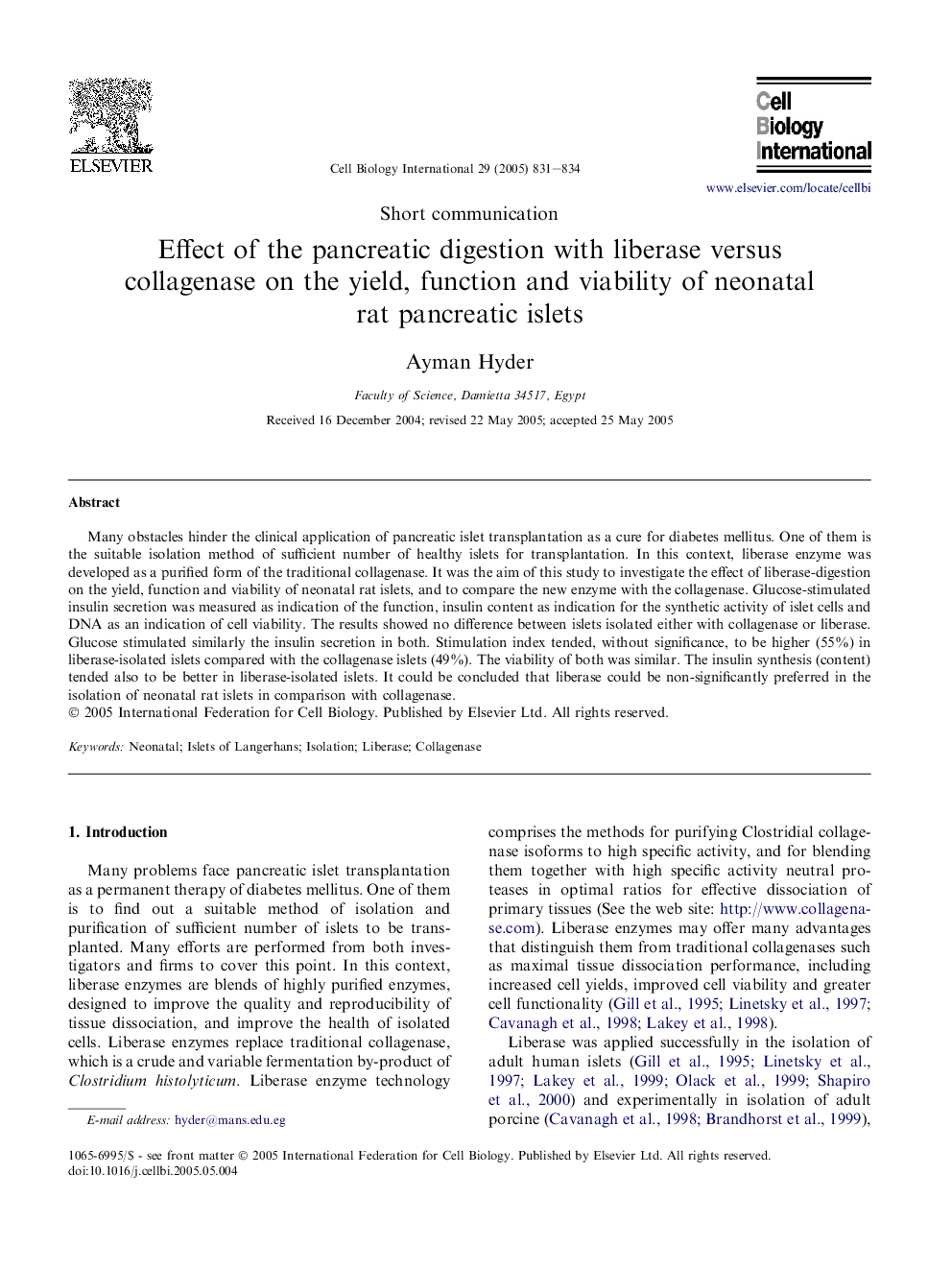| Article ID | Journal | Published Year | Pages | File Type |
|---|---|---|---|---|
| 10882039 | Cell Biology International | 2005 | 4 Pages |
Abstract
Many obstacles hinder the clinical application of pancreatic islet transplantation as a cure for diabetes mellitus. One of them is the suitable isolation method of sufficient number of healthy islets for transplantation. In this context, liberase enzyme was developed as a purified form of the traditional collagenase. It was the aim of this study to investigate the effect of liberase-digestion on the yield, function and viability of neonatal rat islets, and to compare the new enzyme with the collagenase. Glucose-stimulated insulin secretion was measured as indication of the function, insulin content as indication for the synthetic activity of islet cells and DNA as an indication of cell viability. The results showed no difference between islets isolated either with collagenase or liberase. Glucose stimulated similarly the insulin secretion in both. Stimulation index tended, without significance, to be higher (55%) in liberase-isolated islets compared with the collagenase islets (49%). The viability of both was similar. The insulin synthesis (content) tended also to be better in liberase-isolated islets. It could be concluded that liberase could be non-significantly preferred in the isolation of neonatal rat islets in comparison with collagenase.
Related Topics
Life Sciences
Biochemistry, Genetics and Molecular Biology
Biophysics
Authors
Ayman Hyder,
